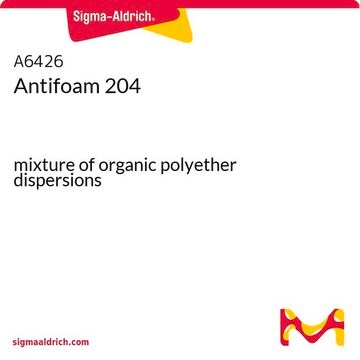13245
Manganese(II) sulfate monohydrate
puriss., meets analytical specification of Ph. Eur, BP, USP, FCC, 99-100.5% (calc. for dried substance)
About This Item
Recommended Products
grade
puriss.
Assay
99-100.5% (calc. for dried substance)
form
powder or crystals
quality
meets analytical specification of Ph. Eur, BP, USP, FCC
impurities
organic volatile impurities, complies (GC)
residual solvents, complies
≤0.002% heavy metals (as Pb)
≤0.5% matter not precip. by ammonia sol.
loss
10-12% loss on ignition, 500 °C
pH
3-3.5 (20 °C, 50 g/L)
anion traces
chloride (Cl-): ≤100 mg/kg
cation traces
As: ≤3 mg/kg
Ca: ≤200 mg/kg
Fe: ≤10 mg/kg
Mg: ≤200 mg/kg
Pb: ≤4 mg/kg
Se: ≤30 mg/kg
Zn: ≤50 mg/kg
suitability
complies for appearance of solution
SMILES string
O.[Mn++].[O-]S([O-])(=O)=O
InChI
1S/Mn.H2O4S.H2O/c;1-5(2,3)4;/h;(H2,1,2,3,4);1H2/q+2;;/p-2
InChI key
ISPYRSDWRDQNSW-UHFFFAOYSA-L
Looking for similar products? Visit Product Comparison Guide
Related Categories
General description
Application
- As a catalyst in the synthesis of heterocyclic compounds such as benzo-2-pyrones and benzopyrazines.
- To prepare cathode material magnesium manganese spine (MgMn2O4) by coprecipitation method.
Signal Word
Danger
Hazard Statements
Precautionary Statements
Hazard Classifications
Aquatic Chronic 2 - Eye Dam. 1 - STOT RE 2 Inhalation
Target Organs
Brain
Storage Class Code
13 - Non Combustible Solids
WGK
WGK 2
Flash Point(F)
Not applicable
Flash Point(C)
Not applicable
Certificates of Analysis (COA)
Search for Certificates of Analysis (COA) by entering the products Lot/Batch Number. Lot and Batch Numbers can be found on a product’s label following the words ‘Lot’ or ‘Batch’.
Already Own This Product?
Find documentation for the products that you have recently purchased in the Document Library.
Customers Also Viewed
Our team of scientists has experience in all areas of research including Life Science, Material Science, Chemical Synthesis, Chromatography, Analytical and many others.
Contact Technical Service









